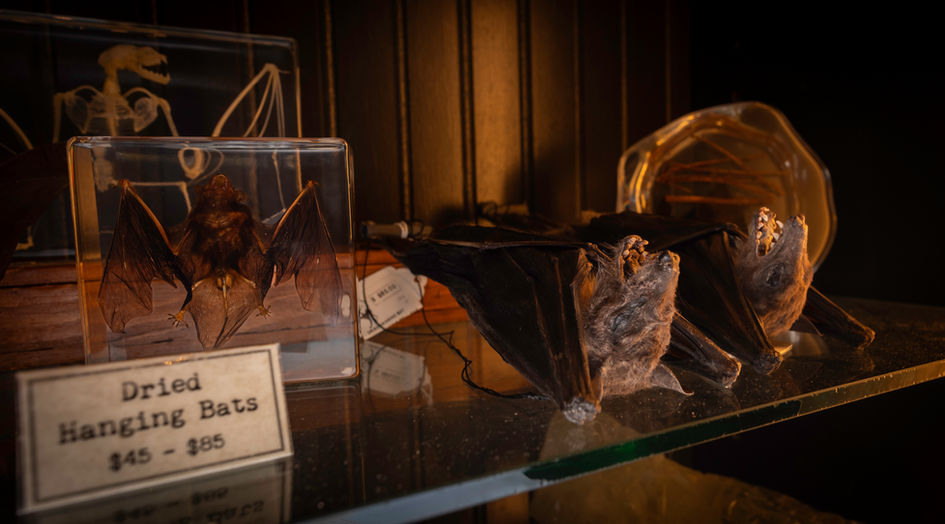Animal Products
A woman dressed for Halloween holds a dried bat, offered as a seasonal trinket at an oddity-themed gift shop in Portland, Oregon. While retailers often claim these specimens are ethically sourced, bat researchers argue otherwise. Bats reproduce too slowly for captive breeding to be commercially viable, suggesting most dried bats come from the wild. In nature, bat carcasses are rapidly broken down by insects and scavengers, making the sourcing of these specimens suspect. To satisfy growing demand for Halloween décor, thousands of bats are killed and imported annually into the U.S. from Southeast Asia and Indonesia. The impact on wild populations remains unclear, but studies reveal troubling trends: up to 30% of bats sold are mislabeled, with some belonging to protected or declining species. Online platforms like eBay and Etsy have been caught selling endangered species. Improperly prepared dried bats pose another risk by potentially harboring diseases such as rabies, Ebola, or coronaviruses, which could infect unwitting buyers. This macabre trade highlights the urgent need for better regulation and public awareness of the ecological and public health implications.
In this series, I explore the world of animal products.




















